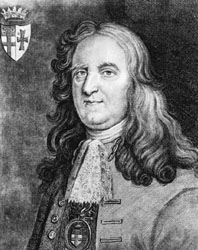

 | Page 431 |  |
(1912–1978)
Roger Duff was born in Invercargill on the south island of New Zealand and attended Otago University and Canterbury University College. Duff was introduced to Pacific ethnology and archaeology by Dr. H. D. Skinner, director of the Otago Museum and a well-known archaeologist. Duff became director of the Dominion Museum (now the National Museum) in Wellington, a position he held from 1948 to 1978.
Duff received a Doctor of Science Degree from the University of New Zealand in 1951 for his most famous work on the Moa-hunter period of Maori culture, which has since been reprinted numerous times. This monograph became the foundation for the integration of modern Maori and Polynesian history based on Duff’s archaeological and ethnological understanding of the Pacific. In his analysis of material excavated from burial sites at Wairu Bar, Duff confirmed that the Maori Moa-hunters were truly Polynesian peoples, rather than Melanesian as had formerly been thought. Based on the highly developed stone-adzes Duff was later to describe eastern Polynesian culture as “Neolithic.”
Duff received a number of awards including the Smith Medal from Otago University for anthropological research and the Hector Medal from the Royal Society of New Zealand.
See also
New Zealand: Prehistoric Archaeology; Papua New Guinea and Melanesia; Polynesia
(1605–1686)
The son of a Warwickshire gentleman, Dugdale became a lawyer. His interests in antiquities and local history were encouraged by local antiquarians William Burton, author of the Description of Leicestershire, and Sir Simon Archer, the owner of a historic collection relating to Warwickshire. During the 1630s and 1640s Dugdale researched the histories of Warwick county’s families, and this brought him to the attention of the well-connected and aristocratic antiquarians of London, Sir Henry Spelman, Sir Christopher Hatton and Thomas, the Earl of Arundel. They invited him to London and eased his way into the world of national antiquarianism. They also encouraged him to research the monastic foundations of England with another antiquarian, Roger Dodsworth of Yorkshire.

Sir William Dugdale
(Hulton Getty)
To this end Dugdale was provided with access to records in the Exchequer and the Tower of London, major depositories of ancient documents dating back to the Middle Ages. The library of Sir Robert Cotton, another antiquarian, was also opened to Dugdale. His patrons recommended that he become a Herald, a position that included lodgings at the Office of Heralds in London and a small income. With the political crisis between Parliament and King James II, Dugdale was dispatched by Sir Christopher Hatton to record as many as possible of the coats of arms, inscriptions with details of kinship lines, and church records on stone, glass, brass, and paper, which the antiquarians knew would be targets for destruction by the Puritans during the impending civil war.
In 1648, with the collapse of the Royalist cause, Dugdale went to France where he continued his research, but on French records about English monasteries. He returned to England to work with Dodsworth to complete their Monasticon and to publish his History of Warwickshire.
 |  |